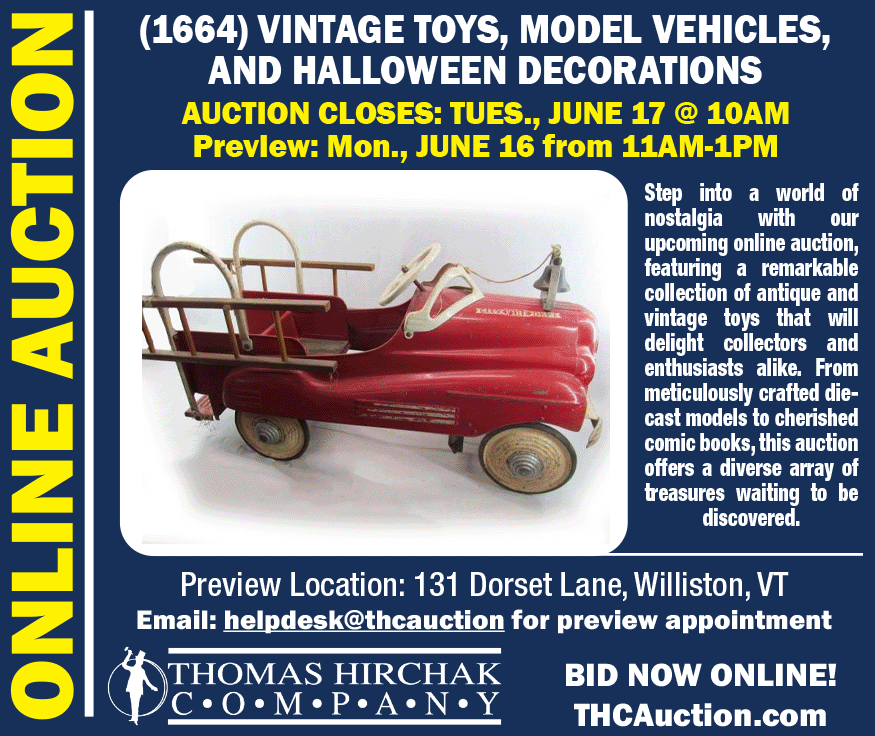Sotheby's Various-Owners Americana Auction
January 23rd, 2015
|
Three phone bidders competed for this pair of oil on canvas portraits by Robert Feke (1707-1752) of Mr. Tench Francis (33¾" x 25¾") and his wife, Elizabeth Turbutt Francis (33½" x 26½"). Painted in Philadelphia, circa 1740, the portraits descended in the family of their daughter Anne and sold on the phone for $75,000 (est. $25,000/35,000). In January 2012 another portrait of Elizabeth Francis, thought to have been painted a bit later, sold at Sotheby’s for $50,000. The pendant to that painting, a portrait of Tench Francis, is at the Metropolitan Museum of Art in New York City, having descended through the family of their daughter Margaret. Tench Francis was a prominent lawyer and jurist, beginning his career in Talbot County, Maryland, and then moving to Philadelphia where he was attorney general of Pennsylvania and a recorder of Philadelphia from 1750 to 1755. He died in Philadelphia in 1758. His daughter Margaret married Chief Justice Edward Shippen and was mother-in-law to Benedict Arnold.
“It was once on the cover of Christie’s, and it was withdrawn when it was thought to be a marriage. If it were not a marriage, it would have brought a mid-six-figure price,” said Erik Gronning of Sotheby’s. “We had it looked over by professionals, and the reports were available to all.” This was the right way to offer it; let the market decide. A handsome piece, it was appreciated. |
Sotheby’s, New York City
Sotheby’s Various-Owners Americana Auction
by Lita Solis-Cohen
Photos courtesy Sotheby’s
Sotheby’s various-owners Americana auction offered 237 lots in two days: 95 lots of prints, silver, and rugs on Friday, January 23, and 142 lots of furniture, folk art, flags, China trade porcelain, and paintings on Sunday, January 25.
After selling the collection of furniture and decorations from the estate of Roy and Ruth Nutt on Friday and Ruth Nutt’s huge collection of silver on Saturday, the two sales totaling more than $6.6 million, the various-owners sale demonstrated how hard it is for auctioneers to put together an auction of Americana from multiple owners at a time when market fluctuations make collectors reluctant to sell. Of the 237 lots offered, just 137 (58%) found buyers, for a total of $2,265,504.
The sale was not without some high spots. A Federal carved and inlaid mahogany fire screen with a rich old surface, attributed to Nathan Lombard (1777-1847) of Sutton, Massachusetts, 1798-1805, was one of the big discoveries of the week. Fresh to market, it sold on the phone to Pennsylvania dealer Todd Prickett of C.L. Prickett for $118,750 (est. $60,000/90,000), underbid in the room by Essex, Massachusetts, dealer Clark Pearce. Pearce and Brock Jobe wrote a study of Nathan Lombard’s furniture for American Furniture 1998, “Sophistication in Rural Massachusetts: The Inlaid Cherry Furniture of Nathan Lombard.”
According to the catalog essay,“The screen relates directly to another firescreen attributed to Lombard, as both have shields bordered with carved leafage, carved urns on their shafts, and are supported on cabriole legs that terminate with scrolls. Both shields also are crafted from mahogany rather than cherrywood—Lombard’s apparent preferred choice of wood.
“The oval fan patera and ‘icicle’ inlays on the shield are motifs found on many of Lombard’s works. It is, however, the richly textured three-dimensional carving on the top and bottom of the shield, urn, and the top of the legs that is without precedent. Further, of the two other surviving pieces with cabriole legs and scroll feet—the aforementioned firescreen and a candlestand at Yale University—neither have volutes carved into their feet. Notably, the carving on Lombard’s other work is more stylized and flatter.
“The…carving [on this piece] is executed asymmetrically at the base of its screen. This vestigial trace of the rococo style and overall richer carving likely indicates that the fire screen was one of the first pieces he crafted. Lombard’s cabinetmaking business was probably established as early as 1798 when he turned 21. At this time the Neoclassical style was emerging in rural Massachusetts, and Lombard’s incorporation of carved and inlaid patera on the shield demonstrates his knowledge of this new esthetic movement.”
An amazing amount of American furniture history can be learned from those heavy January catalogs!
In addition to a number of pieces of Philadelphia furniture, a rare Newport, Rhode Island, dish-top tilt-top tea table with a cupboard on its shaft, a pair of early Philadelphia portraits, a rare New York silver teapot, a flag, and a brilliantly designed patriotic quilt sold for respectable five-figure prices. A cherry scalloped-top chest of drawers, probably by Benjamin Munn III, sold to Historic Deerfield, going back to the town where it was made. A clock by Nathaniel Dominy IV went back to East Hampton, New York, where it was made, with collectors in the salesroom who said they were thrilled to get it. Some folk art, a fraktur, and a powder horn went to persistent bidders for five-figure prices.
 Two pieces of early Boston furniture, a circa 1725 easy chair and a circa 1720 drop-leaf table, were bargains at $12,500 for the easy chair and $3750 for the drop-leaf table. The chair had lost some height on its feet, and the table’s top had been reduced. They would have sold for a lot more a decade or two ago. Worm damage, refinished surface, and design flaws took their toll. The market is unforgiving. The pictures and captions give details of the successes.
Two pieces of early Boston furniture, a circa 1725 easy chair and a circa 1720 drop-leaf table, were bargains at $12,500 for the easy chair and $3750 for the drop-leaf table. The chair had lost some height on its feet, and the table’s top had been reduced. They would have sold for a lot more a decade or two ago. Worm damage, refinished surface, and design flaws took their toll. The market is unforgiving. The pictures and captions give details of the successes.
For more information, contact Sotheby’s at (212) 606-7000; Web site (www.sothebys.com).
 Sixteen-star American national flag, Tennessee, circa 1817, approximately 3'10" x 5'11", $100,000 (est. $20,000/30,000). The hand-sewn double-appliquéd cotton muslin stars are configured onto a two-piece wool bunting canton, the upper section aged to a light blue color, the lower section remaining navy in tone. The canton, stripes, and sleeve are hand sewn. The linen sleeve, marked “8 ft / American Ensign / N.Y.B.” and “1817” or “1857,” contains a period hemp rope that has a wooden toggle at its top. “N.Y.B.” stands for the Navy Yard near Boston. It is likely a flag that saw use during the Civil War. In Sotheby’s May 2002 Americana auction, which included the American flag collection of Thomas S. Connelly, this flag sold for $21,510 (est. $5000/6000). Sixteen-star American national flag, Tennessee, circa 1817, approximately 3'10" x 5'11", $100,000 (est. $20,000/30,000). The hand-sewn double-appliquéd cotton muslin stars are configured onto a two-piece wool bunting canton, the upper section aged to a light blue color, the lower section remaining navy in tone. The canton, stripes, and sleeve are hand sewn. The linen sleeve, marked “8 ft / American Ensign / N.Y.B.” and “1817” or “1857,” contains a period hemp rope that has a wooden toggle at its top. “N.Y.B.” stands for the Navy Yard near Boston. It is likely a flag that saw use during the Civil War. In Sotheby’s May 2002 Americana auction, which included the American flag collection of Thomas S. Connelly, this flag sold for $21,510 (est. $5000/6000). |
|
|
|
|
|
|
|
The horn is in excellent overall condition—Sotheby’s said it has “a rich golden hue”—and it has one of the first depictions of the 13-star American flag. There is a market for the best in any category. When this horn sold at Christie’s in January 2003, it brought $13,145. |
|
According to the catalog, “This table was likely present at the Sewall house—then home of Madame Jones—in the early hours of April 19, 1775, when Paul Revere, John Hancock, John Adams, and John Lowell gathered after the prior evening’s historical ‘Midnight Ride.’ It was in this setting that they regrouped, and prepared for the events which inevitably lead to the Battle of Concord and the ‘shot heard ‘round the world.’” It was a bargain for a piece of history. |
|
|
|
|
|
|
|
|
Originally published in the April 2015 issue of Maine Antique Digest. © 2015 Maine Antique Digest




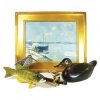



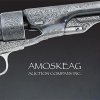

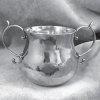
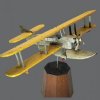

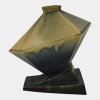
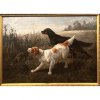


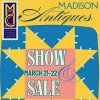


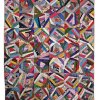







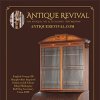

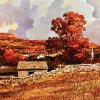

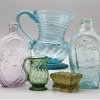



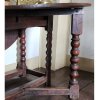
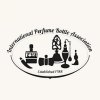

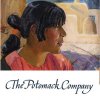



 The Physick family Queen Anne carved walnut desk- and-bookcase, 93" x 40" x 22¾", was a marriage; it sold for $75,000 (est. $6000/12,000) to New York City dealer W. Graham Arader on the phone, underbid by Pennsylvania advisor Alan Miller in the room. According to family tradition, it belonged to Edmund Physick, then to Dr. Philip Syng Physick (1768-1837), and then descended in the family until it was bought by Philadelphia dealer Robert Carlen; the estate of his daughter, Nancy Carlen, consigned it to Sotheby’s.
The Physick family Queen Anne carved walnut desk- and-bookcase, 93" x 40" x 22¾", was a marriage; it sold for $75,000 (est. $6000/12,000) to New York City dealer W. Graham Arader on the phone, underbid by Pennsylvania advisor Alan Miller in the room. According to family tradition, it belonged to Edmund Physick, then to Dr. Philip Syng Physick (1768-1837), and then descended in the family until it was bought by Philadelphia dealer Robert Carlen; the estate of his daughter, Nancy Carlen, consigned it to Sotheby’s. This 26½" x 17" watercolor, gouache, pencil, and ink on paper portrait of a little girl in a blue dress with a wide collar by Ruth Whittier Shute (1803-1882) and Samuel Addison Shute (1803-1836), circa 1830, pictures Caroline Smith, daughter of Nathaniel Pierce Smith (est. $50,000/70,000). It sold in the room for $87,500 to an agent for a collector, underbid in the room by a Chicago collector. Some thought it wasn’t a Shute; others said it was a Shute but a pastel, not gouache, which is why it is not typical.
This 26½" x 17" watercolor, gouache, pencil, and ink on paper portrait of a little girl in a blue dress with a wide collar by Ruth Whittier Shute (1803-1882) and Samuel Addison Shute (1803-1836), circa 1830, pictures Caroline Smith, daughter of Nathaniel Pierce Smith (est. $50,000/70,000). It sold in the room for $87,500 to an agent for a collector, underbid in the room by a Chicago collector. Some thought it wasn’t a Shute; others said it was a Shute but a pastel, not gouache, which is why it is not typical. Federal carved and inlaid mahogany fire screen, attributed to Nathan Lombard (1777-1847), Sutton, Massachusetts, 1798-1805, 55½" high x 19½" wide x 18" deep. The base appears to retain its original surface, but the standard lacks a finial. It sold for $118,750 (est. $60,000/90,000) to Pennsylvania dealer Todd Prickett on the phone, underbid in the room by Essex, Massachusetts, dealer Clark Pearce, who, with Brock Jobe, wrote a study of Nathan Lombard for American Furniture 1998.
Federal carved and inlaid mahogany fire screen, attributed to Nathan Lombard (1777-1847), Sutton, Massachusetts, 1798-1805, 55½" high x 19½" wide x 18" deep. The base appears to retain its original surface, but the standard lacks a finial. It sold for $118,750 (est. $60,000/90,000) to Pennsylvania dealer Todd Prickett on the phone, underbid in the room by Essex, Massachusetts, dealer Clark Pearce, who, with Brock Jobe, wrote a study of Nathan Lombard for American Furniture 1998. Silver cup by William Rouse, Boston, circa 1690, 3½" high, handle engraved with initials “M / S=A,” base engraved with initials “E / HE,” front engraved with later initials “FDM,” marked twice on the base, $8125 (est. $5000/7000).
Silver cup by William Rouse, Boston, circa 1690, 3½" high, handle engraved with initials “M / S=A,” base engraved with initials “E / HE,” front engraved with later initials “FDM,” marked twice on the base, $8125 (est. $5000/7000).  The Captain John Graham Revolutionary War powder horn with a map engraved by Harmon Stebens, New York, 1779, 17" long, sold for $62,500 (est. $40,000/60,000) to a phone bidder. It is engraved with a map of the Hudson and Mohawk Rivers showing the location of various towns and forts, plus a figure of a mermaid and a lion and various views of buildings and towns. Inscribed on the horn are “1779 / John / Graham / Captn,” “Unighted We Stand • Devided We fall,” and “Honours of Warr”; inscribed on the plug is “Harmon Stebens.” John Graham (1756-1832) was a founding member of the Society of the Cincinnati.
The Captain John Graham Revolutionary War powder horn with a map engraved by Harmon Stebens, New York, 1779, 17" long, sold for $62,500 (est. $40,000/60,000) to a phone bidder. It is engraved with a map of the Hudson and Mohawk Rivers showing the location of various towns and forts, plus a figure of a mermaid and a lion and various views of buildings and towns. Inscribed on the horn are “1779 / John / Graham / Captn,” “Unighted We Stand • Devided We fall,” and “Honours of Warr”; inscribed on the plug is “Harmon Stebens.” John Graham (1756-1832) was a founding member of the Society of the Cincinnati. The Abigail Wiswell Jones William and Mary turned walnut gate-leg dining table, Boston, Massachusetts, circa 1720, appears to retain an old, and probably original, finish. The top had been decreased in size; the table is 18¼" high x 18" wide (closed) and 54" wide (open) x 47" deep. It sold without reserve for $3750 (est. $20,000/ 30,000) to the same phone bidder who bought the William and Mary easy chair, underbid on line. At Sotheby’s in October 2000, it sold for $115,000 (est. $100,000/150,000) to dealer Leigh Keno.
The Abigail Wiswell Jones William and Mary turned walnut gate-leg dining table, Boston, Massachusetts, circa 1720, appears to retain an old, and probably original, finish. The top had been decreased in size; the table is 18¼" high x 18" wide (closed) and 54" wide (open) x 47" deep. It sold without reserve for $3750 (est. $20,000/ 30,000) to the same phone bidder who bought the William and Mary easy chair, underbid on line. At Sotheby’s in October 2000, it sold for $115,000 (est. $100,000/150,000) to dealer Leigh Keno. Joseph H. Davis (1811-1865), portrait of David P. Glidden, “Aged 16 Years December 23, 1837,” watercolor and pen and ink on paper, 10" x 8", $12,500 (est. $5000/8000) to a dealer on the phone, bidding for a collector.
Joseph H. Davis (1811-1865), portrait of David P. Glidden, “Aged 16 Years December 23, 1837,” watercolor and pen and ink on paper, 10" x 8", $12,500 (est. $5000/8000) to a dealer on the phone, bidding for a collector.  Jacob Eichholtz (1776-1842), portrait of Mrs. John Gibson, circa 1820, oil on canvas, 29" x 24½", $13,750 (est. $6000/8000) to a phone bidder. It has a partial signature and a date on the back.
Jacob Eichholtz (1776-1842), portrait of Mrs. John Gibson, circa 1820, oil on canvas, 29" x 24½", $13,750 (est. $6000/8000) to a phone bidder. It has a partial signature and a date on the back. Johann Adam Eyer (1755-1837), Pennsylvania German vorschrift copy book for Thomas Heller, Hamilton, Northampton County, Pennsylvania, March 24, 1811, watercolor and pen and ink on paper, 7¾" x 6½" (est. $10,000/15,000). The six-page booklet with original string binding and with inscriptions on the right-hand pages and on the back sold for $23,750 to a phone bidder, underbid in the room by Downingtown, Pennsylvania, dealer Philip Bradley.
Johann Adam Eyer (1755-1837), Pennsylvania German vorschrift copy book for Thomas Heller, Hamilton, Northampton County, Pennsylvania, March 24, 1811, watercolor and pen and ink on paper, 7¾" x 6½" (est. $10,000/15,000). The six-page booklet with original string binding and with inscriptions on the right-hand pages and on the back sold for $23,750 to a phone bidder, underbid in the room by Downingtown, Pennsylvania, dealer Philip Bradley. Carved mahogany side chair, possibly by Thomas Tuft (1740-1788), Philadelphia, carving possibly by Richard Butts, Philadelphia, circa 1770, slip seat marked IIII, 39¾" high, $25,000 (est. $12,000/18,000) to Quakertown, Pennsylvania, advisor Alan Miller. When it was illustrated in William Macpherson Hornor, Jr.’s Blue Book: Philadelphia Furniture (1935), plate 346, it was owned by Mrs. Charles Pemberton Fox of Philadelphia. A mate to this chair is at the Metropolitan Museum of Art (see Morrison H. Heckscher, American Furniture in the Metropolitan Museum of Art. II. Late Colonial Period: The Queen Anne and Chippendale Styles, 1985), and the carving on the legs and front seat rail matches the labeled Thomas Tuft chair at Winterthur (see Joseph Downs, American Furniture: Queen Anne and Chippendale Periods in the Henry Francis du Pont Winterthur Museum, 1952).
Carved mahogany side chair, possibly by Thomas Tuft (1740-1788), Philadelphia, carving possibly by Richard Butts, Philadelphia, circa 1770, slip seat marked IIII, 39¾" high, $25,000 (est. $12,000/18,000) to Quakertown, Pennsylvania, advisor Alan Miller. When it was illustrated in William Macpherson Hornor, Jr.’s Blue Book: Philadelphia Furniture (1935), plate 346, it was owned by Mrs. Charles Pemberton Fox of Philadelphia. A mate to this chair is at the Metropolitan Museum of Art (see Morrison H. Heckscher, American Furniture in the Metropolitan Museum of Art. II. Late Colonial Period: The Queen Anne and Chippendale Styles, 1985), and the carving on the legs and front seat rail matches the labeled Thomas Tuft chair at Winterthur (see Joseph Downs, American Furniture: Queen Anne and Chippendale Periods in the Henry Francis du Pont Winterthur Museum, 1952).

